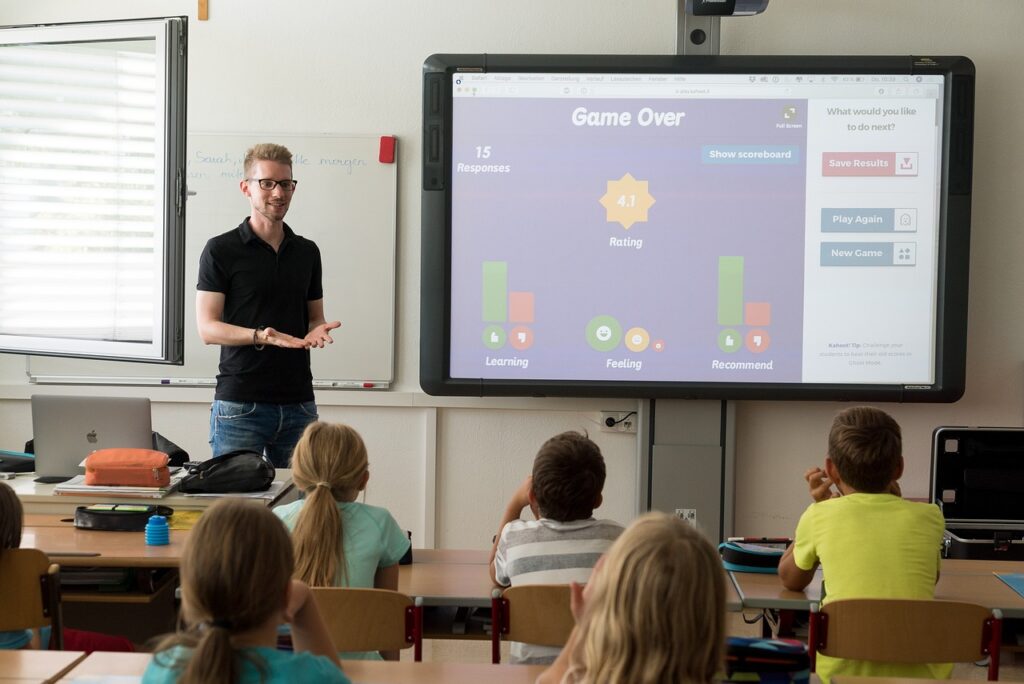Why Introduction is Important in Training?
Inviting trainees to introduce themselves at the start of a corporate training session can help foster a sense of community and improve communication and engagement throughout the training. Here are some pointers for trainers on asking trainees to introduce themselves.
In the world of training and education, the beginning is everything. An impactful introduction sets the tone for the entire learning experience, captivating learners, and ensuring a successful transfer of knowledge. When it comes to training with PowerPoint presentations, a well-crafted introduction is crucial for engaging your audience and making a lasting impression. In this article, we’ll explore why the introduction is so important and how it can enhance your training sessions. Let’s understand more about why introduction is important.
Give specific directions

It is critical to provide clear instructions when requesting trainees to introduce themselves so that everyone understands what is anticipated of them. You can tell trainees how much time they have to talk, what information they should include in their introduction, and any guidelines or expectations for the activity, for example. You can also tell them if there are any particular topics they should cover, such as their professional background or field experience. This is one of the major reasons Why Introduction is Important in training.
Before diving into the training material, it’s essential to clarify the purpose of your PowerPoint presentation. Are you teaching a new skill, presenting important information, or inspiring your audience? Understanding the objective of your training allows you to tailor your introduction accordingly, creating a seamless transition into the content.
Set a positive tone
Introducing oneself in front of a group can be intimidating, especially for those who are shy or introverted. To help trainees feel more comfortable, it’s important to set a positive tone from the beginning. Let trainees know that this is a chance for everyone to get to know each other and that there are no right or wrong answers. You can also encourage them to be themselves and share information that they feel comfortable with. This is one of the major reasons Why Introduction is Important in training.
In today’s fast-paced world, capturing and retaining learner attention is a challenge. Your introduction needs to be compelling and engaging, instantly grabbing your audience’s focus. Consider using attention-grabbing visuals, thought-provoking questions, or intriguing stories to captivate your learners and make them eager to explore further. This is also one of the crucial reasons why Introduction is Important in training.
Be inclusive
When requesting trainees to introduce themselves, it is critical to be inclusive and ensure that everyone has a chance to speak. Depending on the size of the group, you can have each trainee introduce themselves separately, or you can divide the group into smaller subgroups and have them introduce themselves to their group members. This can be an excellent method to encourage group interaction and relationship building. This is one of the major reasons Why Introduction is Important in training.

Establishing a connection with your audience is vital for a successful PowerPoint training session. An introduction that incorporates personal anecdotes or relatable examples helps build rapport, fostering trust and creating a comfortable learning environment. When learners feel connected to the presenter, they are more likely to actively participate and absorb the information. This is one of the major reasons Why Introduction is Important in training.
Creating a Positive Learning Environment
The beginning of your PowerPoint training sets the stage for the entire session. By creating a positive and supportive learning environment, you encourage learners to feel comfortable, ask questions, and actively engage with the content. An introduction that exudes enthusiasm, warmth, and encouragement helps create this conducive atmosphere, making your audience more receptive to the material. This is one of the major reasons Why Introduction is Important in training.
Learners are more motivated when they understand the relevance of the training to their needs or goals. Your introduction should clearly articulate how the PowerPoint presentation will benefit them, whether it’s by improving their skills, enhancing their understanding, or helping them achieve their objectives. Emphasize the value they will gain from the training to increase their engagement and participation. This is one of the major reasons Why Introduction is Important in training.
Providing Structure and Guidance
As the trainer, you should model the behavior you expect from the trainees. This means introducing yourself first and setting an example of how to share information in a concise and engaging way. You can also share some personal information about yourself to help put trainees at ease and encourage them to open up. This is one of the major reasons Why Introduction is Important in training.
A well-structured introduction provides learners with a roadmap for the training session. By outlining the key topics and sections of your PowerPoint presentation, you help learners understand the flow and organization of the content. This guidance allows them to mentally prepare and follow along easily, ensuring a smoother learning experience. This is also one of the various reason why Introduction is Important in training.
How to start the introduction in training?

Asking trainees to introduce themselves is an important first step in building a positive and engaging training environment. By providing clear instructions, setting a positive tone, being inclusive, using icebreaker questions, and modeling the behavior, trainers can help ensure that the introductions are a success and set the stage for a productive training session.
Starting the introduction in a training session is a critical moment that sets the tone for the entire learning experience. It is essential to grab participants’ attention, create a positive atmosphere, and establish relevance to the training topic. Here are some effective ways to start the introduction in training:
1. Greet and Welcome Participants: Begin by warmly greeting the participants and expressing appreciation for their presence. A friendly and welcoming tone helps create a comfortable learning environment right from the start. A warm welcome shows why introduction is important at the beginning of the classroom training.
2. State the Training Objectives: Clearly articulate the objectives of the training session. Explain what participants will learn and achieve by the end of the session. This sets expectations and provides a roadmap for the training content.
3. Share the Benefits: Highlight the benefits that participants can expect from the training. Explain how the knowledge and skills gained will positively impact their personal or professional lives. Emphasize the relevance and value of the training content.
4. Establish Relevance: Connect the training topic to participants’ needs, challenges, or aspirations. Explain why the topic is important and how it relates to their roles, responsibilities, or career development. This helps participants understand the relevance and motivates their engagement.
5. Use an Engaging Opening: Start with an attention-grabbing statement, anecdote, or statistic that sparks curiosity and captivates participants’ interest. This can be a surprising fact, a thought-provoking question, or a real-life example that highlights the significance of the training topic. This also indicates why introduction is important at the beginning of the classroom training.
6. Relate to Participants’ Experiences: Find common ground with the participants by sharing a relatable experience, story, or scenario. This creates a personal connection and demonstrates empathy, making the training content more relatable and engaging.
7. Involve Participants: Encourage active participation right from the start. Pose a question, initiate a brief discussion, or invite participants to share their thoughts or expectations about the training topic. This engages participants early on and signals that their input is valued. This is one of the reasons why introduction is important at the beginning of the classroom training.
8. Provide an Overview: Give a brief overview of the training agenda and the main topics that will be covered. This helps participants understand the structure and flow of the training session and mentally prepare for what’s to come.
9. Set Ground Rules: Establish clear expectations and ground rules for the training session. This can include guidelines for respectful communication, active participation, and any specific norms or protocols relevant to the training topic. This is one of the reasons why introduction is important at the beginning of the classroom training.
10. Express Enthusiasm and Confidence: Demonstrate your enthusiasm and confidence about the training content and your ability to deliver it effectively. A positive and confident demeanor helps create a motivational and inspiring learning environment. This is one of the reasons why introduction is important at the beginning of the classroom training.
Remember, the introduction sets the stage for the entire training session. By starting off on the right foot, trainers can capture participants’ attention, generate interest, and create a positive learning atmosphere. It is an opportunity to establish rapport, relevance, and engagement that will carry throughout the training journey. This is one of the reasons why introduction is important at the beginning of the classroom training.
Here is a free PowerPoint template which you can use during the introduction. Instead of asking the trainees to tell something about themselves, you can use this PPT to make the introduction more interesting and fun. This is also a very good way to check the communication level of the trainees specially if you are training a call center batch. Check out the free resources page for more free staff for trainers. Interactive training slides free download.
Types of Introduction in a Classroom Training Session
When it comes to introducing a classroom training session, trainers have various options to choose from. The type of introduction they select depends on the training objectives, the nature of the content, and the preferences of the participants. Here are some common types of introductions used in classroom training sessions:
1. Icebreaker Activities: Icebreakers are popular introductions that help participants get to know each other and create a positive learning environment. These activities can include games, team-building exercises, or short interactive exercises that encourage interaction and build rapport among participants. This is one of the reasons why introduction is important at the beginning of the classroom training.
2. Storytelling: Trainers can begin a training session by sharing a relevant and engaging story that relates to the topic at hand. Storytelling captures participants’ attention, makes the content more relatable, and sets the stage for the training session by providing context and real-life examples. This is why introduction is important at the beginning of the classroom training sessions.

3. Guided Discussion: This type of introduction involves starting the session with a group discussion centered around the topic. The trainer poses thought-provoking questions or presents scenarios to encourage participants to share their thoughts, experiences, and expectations related to the training topic. It promotes active engagement and helps the trainer gauge participants’ prior knowledge and perspectives.
4. Multimedia Presentation: A multimedia presentation is a visual and auditory introduction that incorporates slides, videos, or audio clips to provide an overview of the training content. This type of introduction is effective for presenting key concepts, statistics, or industry trends in a visually appealing and engaging manner. This is why introduction is important at the beginning of the classroom training sessions.
5. Demonstration or Activity: Some training sessions may require a hands-on approach, where the trainer starts with a demonstration or activity related to the training topic. This introduction allows participants to experience the subject matter firsthand, fostering curiosity and generating interest in the upcoming content.
6. Pre-assessment or Quiz: Introducing a training session with a pre-assessment or quiz can serve multiple purposes. It helps the trainer gauge the participants’ current knowledge level, identifies knowledge gaps, and creates a sense of curiosity and motivation to learn more about the topic. This is why introduction is important at the beginning of the classroom training sessions.
7. Provocative Statement or Question: Starting a training session with a provocative statement or question can instantly capture participants’ attention and spark curiosity. This type of introduction challenges participants’ existing beliefs or perceptions, encouraging critical thinking and setting the stage for exploring different perspectives throughout the training.

8. Personal Reflection or Journaling: Trainers can invite participants to engage in a brief personal reflection or journaling activity at the beginning of the session. This allows participants to connect with their own thoughts and emotions related to the training topic, fostering self-awareness and preparing them for deeper exploration of the content. This is why introduction is important at the beginning of the classroom training sessions.
The choice of introduction depends on the trainer’s style, the objectives of the training, and the preferences of the participants. By selecting an appropriate introduction method, trainers can create a positive and engaging learning environment that sets the stage for effective knowledge transfer and participant involvement in the training session.
How to Use the Icebreaker PowerPoint Template?
- Download: Simply click the link below to access the Icebreaker PowerPoint Template.
- Customize: Tailor the template to fit your training session by adding your own content and personal touch.
- Engage: Use the interactive slides to break the ice, encourage discussion, and create a lively learning environment.
- Have fun: Enjoy the process of engaging your participants and watching your training sessions come to life.
Conclusion
The beginning of a classroom training session is a crucial time to set the tone for the rest of the session and create a positive learning environment. It is during this initial phase that icebreakers come into play. Icebreakers are activities or exercises designed to break down barriers, encourage interaction, and help participants feel more comfortable and engaged in the training session. This is why introduction is important at the beginning of the classroom training sessions.
Icebreakers serve as an introduction to the group, allowing participants to get to know each other and establish connections. They help in reducing anxiety and creating a sense of belonging, especially when participants are meeting new people or entering an unfamiliar learning environment. By providing a relaxed and inclusive atmosphere, icebreakers lay the foundation for effective communication, collaboration, and active participation throughout the training. This is why introduction is important at the beginning of the classroom training sessions.
In addition to promoting social interaction, icebreakers also serve as an opportunity for the trainer to establish their credibility and build rapport with the participants. By engaging in these activities alongside the participants, trainers demonstrate their willingness to connect and create a supportive learning environment. This helps to foster trust and encourages participants to feel more comfortable asking questions, sharing their thoughts, and actively participating in discussions.
Furthermore, icebreakers can be used to introduce the training topic or key concepts in an interactive and engaging manner. By incorporating relevant questions or scenarios into the icebreaker activity, trainers can stimulate critical thinking and provide a preview of the upcoming training content. This not only enhances the participants’ understanding of the topic but also generates excitement and curiosity about what is to come. This is why introduction is important at the beginning of the classroom training sessions.
Overall, the use of icebreakers at the beginning of a classroom training session is essential for creating a positive and engaging learning experience. These activities break down initial barriers, promote social interaction, and establish a comfortable learning environment. By incorporating icebreakers into their training sessions, trainers can set the stage for effective communication, active participation, and successful learning outcomes.

![The Power of Storytelling in Corporate Training: Igniting Success and Inspiring Growth [2023]](https://trainercentric.com/wp-content/uploads/2023/06/storytelling-1024x576.jpg)
